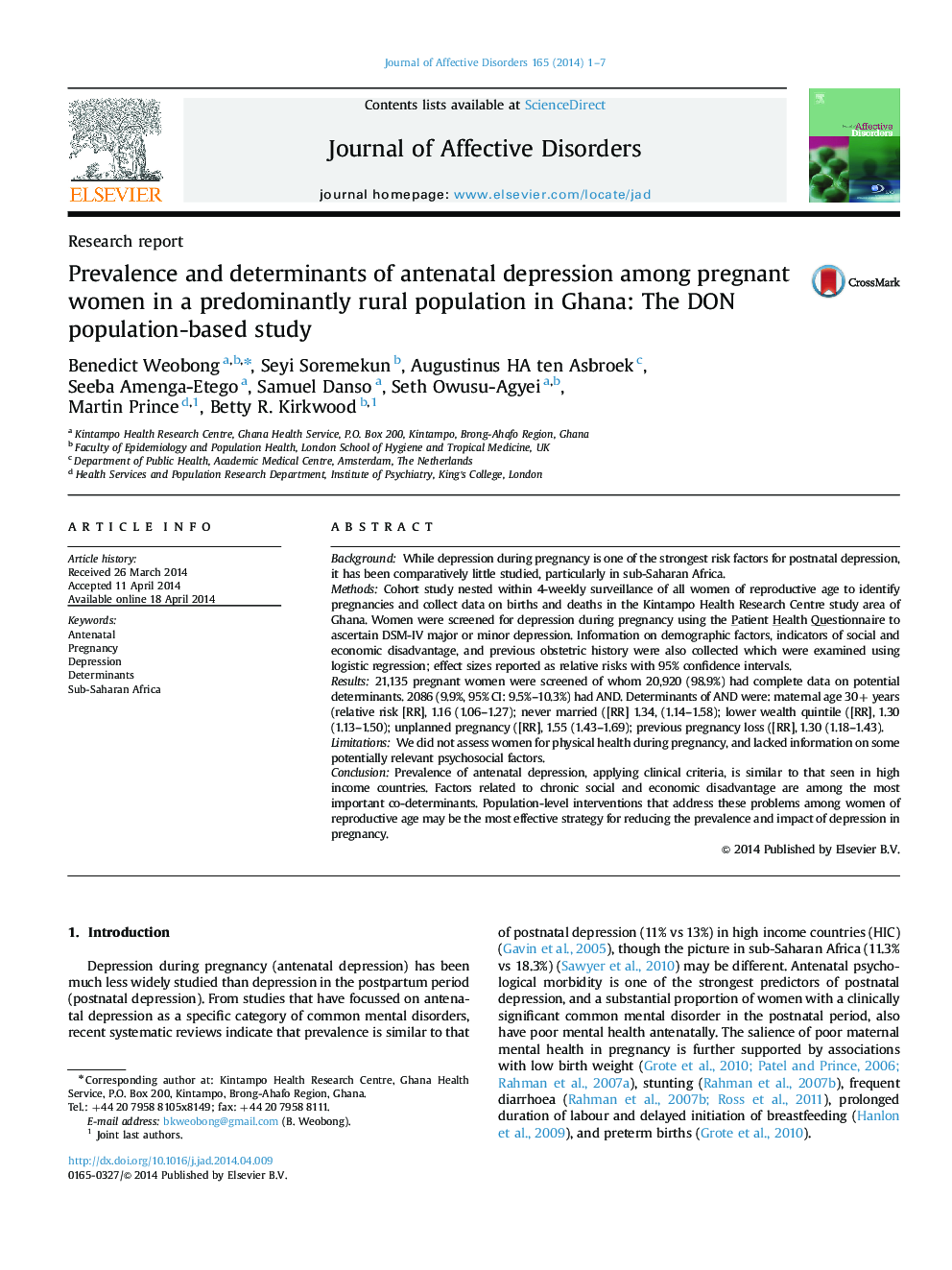| Article ID | Journal | Published Year | Pages | File Type |
|---|---|---|---|---|
| 4185984 | Journal of Affective Disorders | 2014 | 7 Pages |
BackgroundWhile depression during pregnancy is one of the strongest risk factors for postnatal depression, it has been comparatively little studied, particularly in sub-Saharan Africa.MethodsCohort study nested within 4-weekly surveillance of all women of reproductive age to identify pregnancies and collect data on births and deaths in the Kintampo Health Research Centre study area of Ghana. Women were screened for depression during pregnancy using the Patient Health Questionnaire to ascertain DSM-IV major or minor depression. Information on demographic factors, indicators of social and economic disadvantage, and previous obstetric history were also collected which were examined using logistic regression; effect sizes reported as relative risks with 95% confidence intervals.Results21,135 pregnant women were screened of whom 20,920 (98.9%) had complete data on potential determinants. 2086 (9.9%, 95% CI: 9.5%–10.3%) had AND. Determinants of AND were: maternal age 30+ years (relative risk [RR], 1.16 (1.06–1.27); never married ([RR] 1.34, (1.14–1.58); lower wealth quintile ([RR], 1.30 (1.13–1.50); unplanned pregnancy ([RR], 1.55 (1.43–1.69); previous pregnancy loss ([RR], 1.30 (1.18–1.43).LimitationsWe did not assess women for physical health during pregnancy, and lacked information on some potentially relevant psychosocial factors.ConclusionPrevalence of antenatal depression, applying clinical criteria, is similar to that seen in high income countries. Factors related to chronic social and economic disadvantage are among the most important co-determinants. Population-level interventions that address these problems among women of reproductive age may be the most effective strategy for reducing the prevalence and impact of depression in pregnancy.
